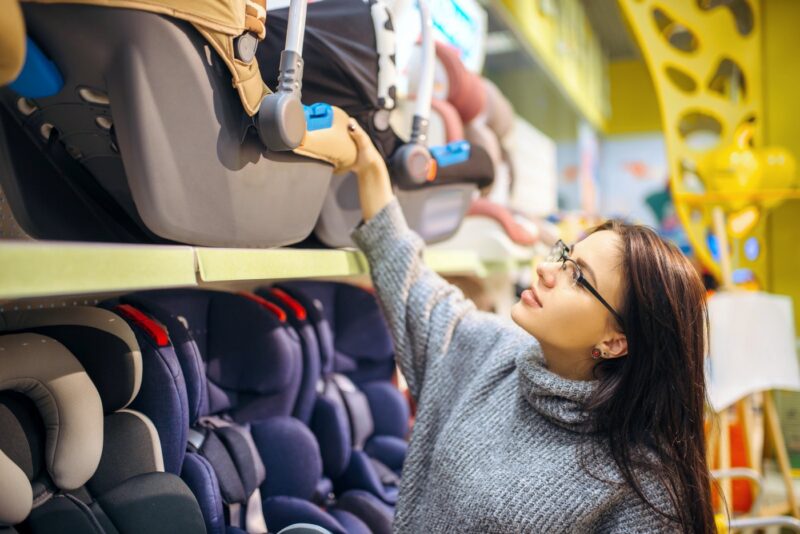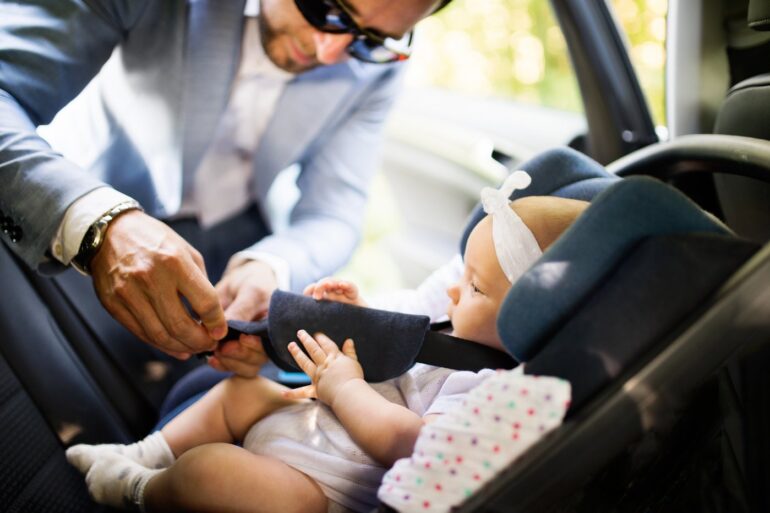It seems so basic, right? Buckle seat in car. Buckle baby in seat. Go!
Not so fast. Accident investigations and research have both shown that installing a car seat correctly remains a difficult task for parents and caregivers — and, as a result, nearly 3 out of 4 car seats are improperly installed or used.
Common car seat mistakes
According to a National Highway Traffic Safety Administration (NHTSA) report, the most common errors involved loose vehicle safety belt attachments to the car seat, and loose harness straps securing the child to the seat.
But those are only two potential problems. With information provided by AAA, Safe Kids, NHTSA, the NTSB (National Transportation Safety Board) and Baby Trend, we have compiled this list of mistakes parents may make when installing and using car seats — ranging from installing the seat incorrectly in the first place to moving kids out of car seats too soon.
1. Moving out of a booster seat too soon: Seat belts are designed to fit adults, not children. Depending on a child’s growth and development, a seat belt typically fits properly (lap belt across the hips and shoulder belt across the chest and collarbone) between the ages of 8 and 12.
The lap belt should not be resting over the stomach and/or the shoulder belt should not be on the child’s neck or face.
2. Not installing the car seat tight enough: Once your car seat is installed (and before you put the baby in it), give it a good shake at the base. Can you move it more than an inch side to side or front to back? A properly-installed seat will not move more than an inch.
3. Car seat mistake: Harness straps are too loose. Harness should be snug enough (with no gaps or twists) to keep the child restrained in the event of a crash.
Says Teresa Holland, a certified Child Passenger Safety Technician (CPST) and Customer Service Supervisor for Baby Trend, “For a snug fit, check the harness straps by using your index finger and thumb. If you can still pinch the fabric of the harness straps, they are too loose.”

4. Wrong harness slot used: The harness straps used to hold the child in the car seat should not be positioned either too low or too high. “When a child is rear-facing the shoulder straps should be at or below the shoulders,” Holland says. “If the child is forward-facing, the shoulder straps should be at or above the child’s shoulders.”
5. Retainer clip (or chest clip) is too low: The retainer clip needs to be at armpit level to secure the child in the event of a crash.
6. Turning child forward-facing too soon: Keep your child in a rear-facing car seat for as long as possible, usually until around age 2. When he or she outgrows the seat, move your child to a forward-facing car seat.
Make sure to attach the top tether after you tighten and lock the seat belt or lower anchors. Continue to use a booster seat until your child properly fits in the seat belt, usually when they are between the ages of 8 and 12.
7. Not using the right seat: Check the label on your car seat to make sure it’s appropriate for your child’s age, weight and height. Like milk, your car seat has an expiration date. Just double-check the label on your car seat to make sure it is still safe.
8. Allowing a child under 13 to ride in the front seat: Younger children are not typically large enough to ride safely in the front seat and can be seriously injured by front airbags in the event of a crash.
The safest recommendation is to keep all children in the back seat until they are 13. This, along with correctly using the appropriate child restraints, greatly reduces the risk of injury.
9. Forgetting the top tether: Without the top tether, which is a strap that connects the forward-facing car seat to the car and restricts the top of the seat from moving forward in a crash, a child’s head and neck could be subjected to excessive forward movement in a sudden stop or crash.
10. Adding additional padding, toys or mirrors to a child’s car seat: Using products that have not been tested with the car seat may interfere with how the seat was designed to perform in a crash. Additionally, loose items can become dangerous projectiles in a crash.
11. Installing a car seat using LATCH in the center rear position of a vehicle (when not permitted by the manufacturer): Most vehicles do not support LATCH in the center rear seats. Always use the vehicle’s owner’s manual to determine which vehicle seats support LATCH.
12. Installing a car seat using both LATCH and a seat belt: It’s one or the other as these systems often work against each other in the event of a crash.
13. Transporting unsecured, heavy items, including pets, in the vehicle: These items can become a dangerous projectile in the car and seriously injure passengers.
14. Wearing bulky coats/sweaters while buckled into a car seat: Bulky coats can create slack in the harness system — always buckle your cutie first, and then place blankets over them as needed for warmth.
15. Car seat mistake: Not reading the car seat instruction manual, and the portion of your vehicle’s owner’s manual on car seat installation. Because every car seat and vehicle is different, it’s important to follow all instructions carefully.
Every car seat needs to be installed using either the lower anchors of the LATCH system or the seat belt to secure it in place. If you choose to use a seat belt to install your car seat, pay close attention to how to “lock” your seat belt in the vehicle owner’s manual.
16. Not registering your car seat: In the case of a safety seat, registration isn’t just about marketing or getting a warranty — It gives the manufacturer the ability to contact you about recalls and safety notices.
Sometimes a car seat or booster seat doesn’t comply with these required safety standards, or there’s a safety-related defect. When this happens, a recall may occur so the manufacturer can fix the problem. You can also check for recalls on the seat manufacturer’s site or via the NHTSA site.
17. Not taking enough time to install the seat properly: How long should it take? “A first-time installation may vary based on the car seat type, mode of installation and vehicle,” says Holland. “Considering that all materials have been reviewed and preparations made, the installation may take about 15 to 30 minutes.”
18. Not getting help if you think you need it: “[Parents] may want to consider contacting the manufacturer or a certified technician for assistance if they find the installation difficult,” says Holland.
Fortunately, it should be easy to find a car seat inspection station near you. There, certified Child Passenger Safety Technicians (CPSTs) will inspect your child car seat — in most cases, free of charge — and show you how to correctly install and use it.





